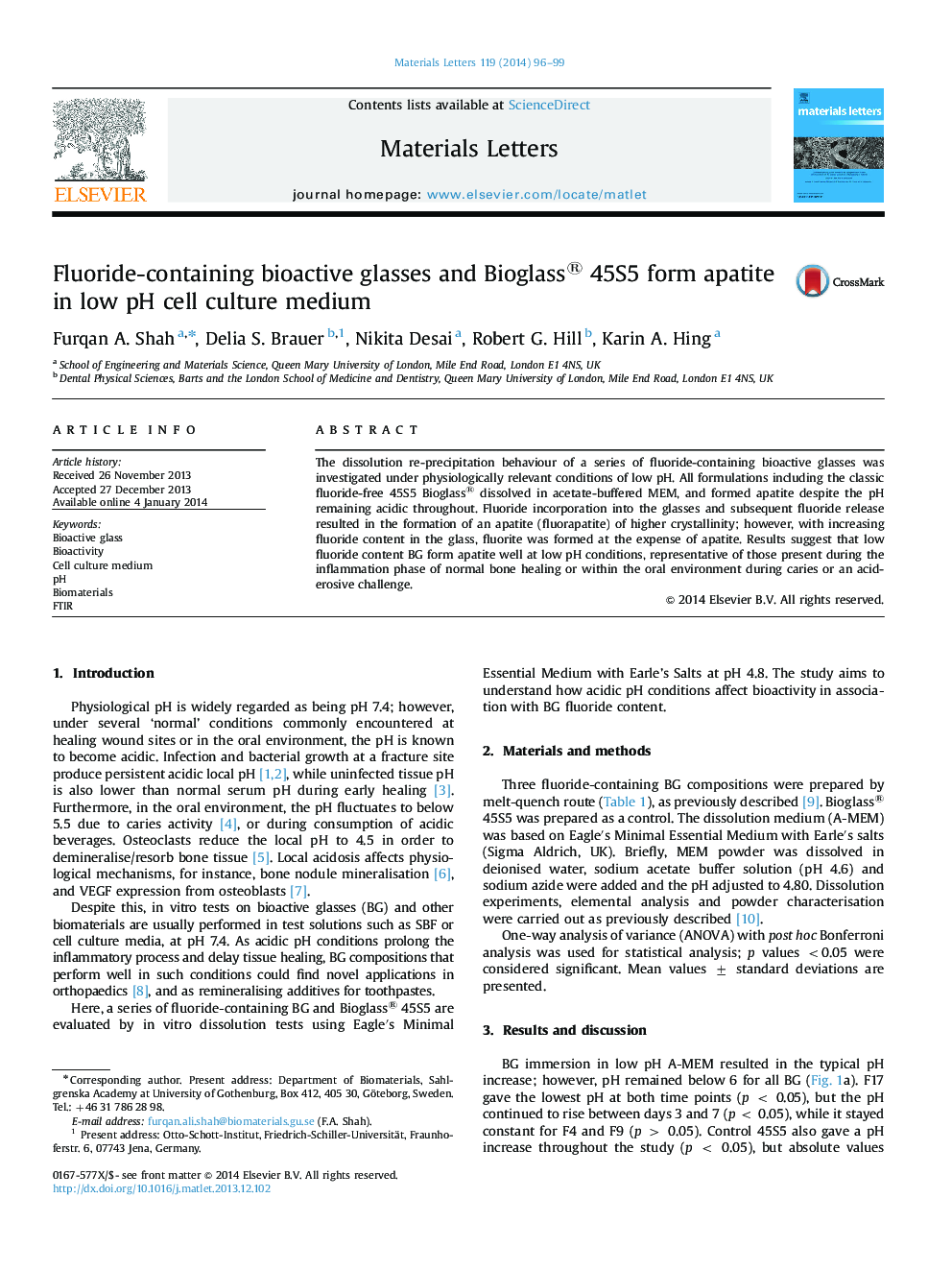| Article ID | Journal | Published Year | Pages | File Type |
|---|---|---|---|---|
| 1644622 | Materials Letters | 2014 | 4 Pages |
•Glass dissolution/apatite formation has been studied at low pH (pH<6).•All glasses formed apatite at low pH, but F− seems clearly beneficial.•Mg2+ concentration in solution decreases, so most likely incorporated into apatite.
The dissolution re-precipitation behaviour of a series of fluoride-containing bioactive glasses was investigated under physiologically relevant conditions of low pH. All formulations including the classic fluoride-free 45S5 Bioglass® dissolved in acetate-buffered MEM, and formed apatite despite the pH remaining acidic throughout. Fluoride incorporation into the glasses and subsequent fluoride release resulted in the formation of an apatite (fluorapatite) of higher crystallinity; however, with increasing fluoride content in the glass, fluorite was formed at the expense of apatite. Results suggest that low fluoride content BG form apatite well at low pH conditions, representative of those present during the inflammation phase of normal bone healing or within the oral environment during caries or an acid-erosive challenge.
